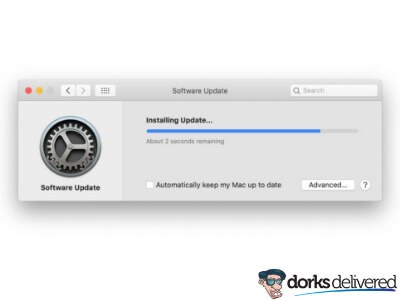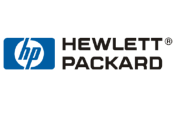As companies expand and start-ups take the plunge, they need to be extra careful in protecting their data.
Most data is sensitive and must be strictly guarded. Otherwise, loss of data can be a fatal mistake for a business, so IT has a very important job: data protection. However, regardless of the number of mechanisms you put in place and the number of precautionary steps you take, data protection is only as good as your best data backup strategy.
Thanks to technology, there are many ways in which you can get an effective onsite and off-site backup for all of your data, both on your premises and in the cloud.
The 3-2-1 Rule
One of the best practices followed in data protection and backup strategies is the 3-2-1 rule. With this rule, all businesses are advised to have 3 backups stored on at least 2 different kinds of media with 1 copy being stored off-site.
Have 3 backups stored on at least 2 different kinds of media onsite and 1 copy being stored off-site.
3 Prerequisites to an Effective Data Protection and Backup Strategy
There are three main prerequisites to having an effective data backup strategy.
1. Identify Sensitive Data
Not all data is equally sensitive. Some data is redundant so it’s not really needed. Before you choose a data protection and backup strategy, the first thing to do is to identify the data that is crucial to running your business.
2. Prioritise and Segregate
Once you have identified which data is critical, it’s time to sort it in order of priority. The data which is on top of the ladder has to get full attention. As you go down, the data will become less and less sensitive, but it will still need extra care.
3. Know Your Third-Parties
There are many other people who have access to your data—maybe not to all of it, but some of it. Check out all of the third parties that have access to your data and review their security setup and backup measures. In the long run, this will make your work of data protection a lot easier.
5 Data Protection and Backup Strategies in a Hybrid Environment
Creating data backups on hard drives and keeping them under lock and key is an age-old method to preserve and protect data. Although it sounds like a good idea, this method is no longer sufficient. What are the options available today and which of those are really effective? To answer this question, let’s study some data protection and backup strategies.
1. On-Premise Versus Cloud
There was a time when organisations had their own servers. Some, very few, still have their own server today. These companies would create data backups on their own servers.
If you have strong firewalls and other precautionary measures in place, creating data backups on your own servers is a good idea. In hindsight, all the data is now in one place, so a person who gains unauthorised access into your server will have everything at his disposal to create mischief.
Storing your data in the cloud is a good option because your data is stored in a virtual world and relatively hard to access. It does not involve your servers and can be accessed from anywhere.
A good data backup and data protection strategy would be to divide the data, with some of it on your servers while keeping the others on the cloud.
2. Cloud-to-Cloud Backup
Instead of keeping all of your beers in one esky, you can distribute them into different ones. You take the data from a production environment and store it in another public cloud environment. Data in one cloud is backed up and stored in another cloud. Effectively speaking, you separate the fault domains for your backup data and production data.
The key to having an effective backup and data protection strategy in a hybrid environment lies in data separation.
3. Snapshot Backup
A point-in-time backup is known as a snapshot. It is almost like snapping a picture of all of your data at a given point in time. Cloud backups, in reality, are a snapshot. Creating a virtual image of your machines allows hassle-free rollback to the last saved snapshot.
4. Full Backup and Incremental Backup

However, creating the entire backup again and again as you move ahead in time is a wasteful activity. It also impacts your efficiency as you continue to do redundant work, so once you have created a full backup, what you need to do is have incremental backups. In incremental backups, only the changes since the last complete backup are saved. In the cloud, storage has a value.
5. Versioning
It is also important to have backup versions available. Say you updated your software to its most current version. When you did that, unknowingly, you made some changes to a file that contained some important data. The problem due to these changes will arise after some time, not immediately. In such a case, if you have backed up the older version, you will be able to recover the file with the original data where no changes have been made.
Data Protection and Backup Strategy That Suits Your Business
Once you’ve identified the backup strategy that suits your business the most, you can go ahead with it. The important thing to consider here is the Restore Point Objective (RPO). This is the amount of data that a business can lose yet withstand its repercussions. In business terms, it would mean losing say 90 minutes of data because your automatic backup happens every 89 mins.
The other thing to consider is the Restore Time Objective (RTO). This is the time it takes for the RPO to get restored. Based on this information, you can even choose how often you want the backup procedures to run automatically.
The Final Word
In the end, backups are essential for all businesses. In the hour of need, they will become your saving grace. However, creating backups is a costly affair. You need to fully analyse your needs prior to deciding what needs to be saved. The most effective backup strategy is that where data is prioritised and all information is not saved in a single location. Separate the locations and backup just what you need!
Editor’s Note: This article was originally published on 25th January 2019. It has been revamped and updated for accuracy and comprehensiveness.
Need help with your data backup? Contact us for custom IT solutions for your small business starting at $1.
[module-379]





























